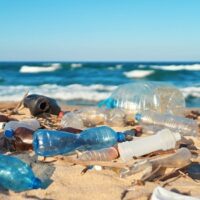Toxic Takeout? Your Foam Food Containers Could Be Putting Your Health at Risk
Plastic foam leaches hazardous chemicals into our food, our bodies, and our oceans, warns new Oceana report
Press Release Date: April 8, 2025
Location: Washington, D.C.
Contact:
Ariana Miller, Megan Jordan | email: amiller@oceana.org, mjordan@oceana.org | tel: Ariana Miller, 202.868.4061
Today, Oceana released a new report, “Plastic Foam Needs ‘To Go,'” revealing the dangers behind single-use plastic foam products like clamshell takeout food containers, cups, packing peanuts, and disposable coolers. According to the report, plastic foam, which is also called expanded polystyrene, compromises our health and our oceans.
Plastic foam is made with hazardous chemicals, like its main building block styrene, which is toxic to the human nervous system. Styrene is linked to cancer and considered a probable human carcinogen by the U.S. National Institutes of Health. Styrene and other chemicals can easily leach into food and beverages at all temperatures, but hotter temperatures heighten the risk.
Food and drinks containing high levels of fat also increase the leaching of styrene and other chemicals. This raises the question: are foam takeout containers and cups risking our health? The American Academy of Pediatrics recommends that parents avoid giving their children plastic products made of polystyrene, which includes plastic foam. Adding to the concern, tiny pieces of polystyrene microplastic have been found in our bodies, including the brain, blood, lungs, kidneys, and reproductive systems.
“The more you learn about foam, the more troubling it is. This is scary stuff!” said Christy Leavitt, Oceana’s U.S. Plastics Campaign Director. “Consumers should be alarmed, and government leaders should be urgently working to get rid of plastic foam. It’s unsettling that a bite of food or sip of a drink could threaten our health, simply because it comes in plastic foam. The bottom line is food and beverages served in plastic foam come with added, hazardous ingredients you didn’t order. The big question is: why is plastic foam still being sold and used for food and drinks when it’s linked to cancer? The evidence is clear that plastic foam threatens our health and our oceans, and we need government leaders to quickly act to get rid of it and support reusable and refillable products.”
Plastic foam is also one of the most common types of marine plastic pollution, and was one of the first types of plastic discovered in the ocean. Threatened and endangered sea turtles, protected marine mammals (including porpoise, elephant seals, and Steller sea lions), shorebirds, and crabs have all eaten plastic foam. For example, off Florida’s Atlantic coastline, scientists found threatened and endangered sea turtles ingested polystyrene and other plastics shortly after hatching, and half of those turtles died. In a range of studies, wildlife exposed to polystyrene microplastics in lab settings faced complications, including harmful impacts to reproduction, growth, movement, and health.
Some other report highlights include:
- More than 8 million metric tons, or over 17 billion pounds, of plastic foam are produced globally every year;
- Plastic foam contains toxic chemicals and attracts pollutants from the water, putting wildlife and people at risk;
- Plastic foam fragments, cups, and plates are among the top 10 most littered items found across the U.S.;
- The production of plastic foam releases hazardous emissions into the air, threatening the health of nearby communities;
- Only 1% or less of plastic foam waste is recycled each year in the U.S.
National polling released in 2025 found that 78% of registered U.S. voters support national policies to reduce single-use plastic foam.
Government policies to reduce plastic foam products are gaining momentum at the state and local levels around the United States and in countries around the world. To date, 12 states have passed laws to reduce plastic foam, including California, Colorado, Delaware, Maine, Maryland, New Jersey, New York, Oregon, Rhode Island, Vermont, Virginia, and Washington, as well as the District of Columbia. More than 250 cities and counties have also passed restrictions on plastic foam.
Phasing out the production and use of plastic foam is the most effective way to tackle plastic foam pollution — and the evidence shows that these policies are working.
After Washington, D.C. passed a single-use plastic foam ban in 2014, the Anacostia River that runs through the city saw a 50% reduction in plastic foam pollution during the first year the law was implemented. After five years, foam pollution fell by 88%. Similarly, Maryland’s Baltimore Inner Harbor saw an 80% reduction in foam pollution collected by “Mr. Trash Wheel,” a giant trash interceptor, following a statewide single-use foam foodware ban passed in 2019. After Charleston, South Carolina banned foam takeout boxes in 2018, the city saw a 20% decrease in this type of trash during beach clean-ups the following year.
Background
Plastic has been found in every corner of the world and has turned up in drinking water, beer, salt, honey, and more. It’s been found in the air we breathe and the water we drink and it’s even showing up in our bodies, including blood, lungs, heart, and breast milk. Plastic poses environmental and public health threats at every stage from extraction and production to use and disposal. It’s also one of the greatest contributors to climate change. In fact, if plastic were a country, it would be the fourth-largest emitter of greenhouse gases in the world. With plastic production growing at a rapid rate, increased amounts of plastic can be expected to flood our blue planet with devastating consequences.
A 2020 Oceana report revealed evidence of nearly 1,800 animals from 40 different species swallowing or becoming entangled in plastic in U.S. waters between 2009 and early 2020. Of those animals, a staggering 88% were from species listed as endangered or threatened with extinction under the Endangered Species Act.
Less than 6% of plastic in the U.S. is recycled, yet the plastics industry continues to tout recycling as a panacea while pushing new plastic products onto the market. Companies need to dramatically reduce the production and use of unnecessary single-use plastic, provide plastic-free choices, and develop systems that refill and reuse packaging and foodware. Elected officials must enact policies to ensure they do so.
In February 2025, Oceana released the results of a nationwide poll revealing that an overwhelming majority of U.S. voters support policies that reduce single-use plastics. Overall, 81% of U.S. voters support reducing the amount of plastic that is produced. The national online poll, conducted for Oceana by the nonpartisan polling company Ipsos using the probability-based KnowledgePanel®, surveyed 1,111 registered U.S. voters from December 13 to 15, 2024.
Included among the key findings:
- 80% of U.S. voters support state and local policies that reduce single-use plastic foam.
- 78% of U.S. voters support national policies that reduce single-use plastic foam.
- 85% of U.S. voters support increasing the use of reusable packaging and foodware.
- 80% of U.S. voters support requiring companies to reduce single-use plastic packaging and foodware.
To learn more about Oceana’s campaign to stop plastic pollution, please visit usa.oceana.org/plastics.



